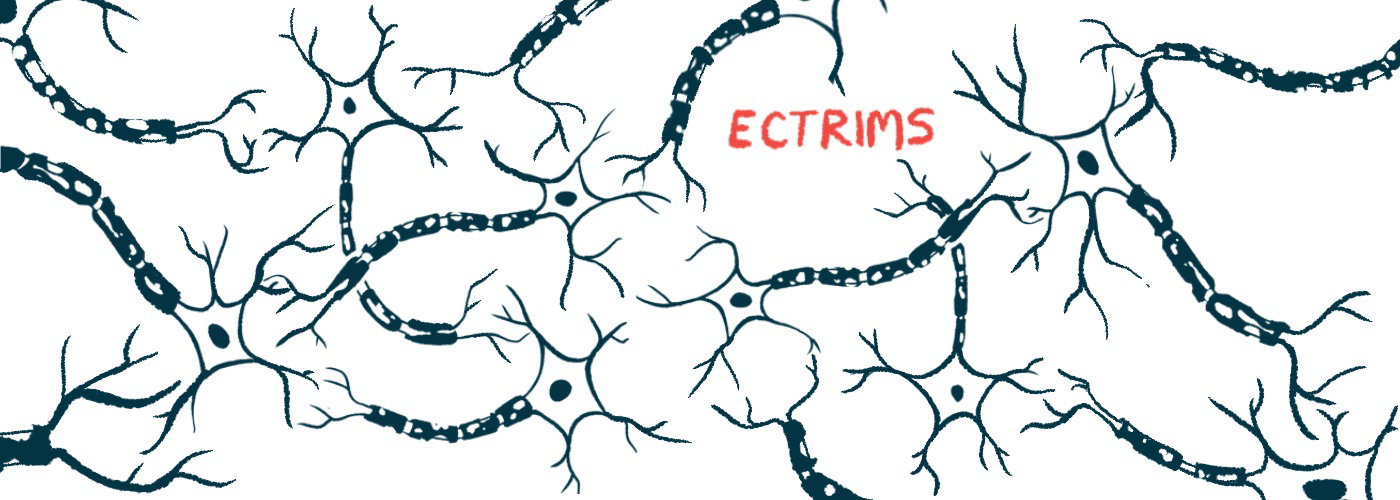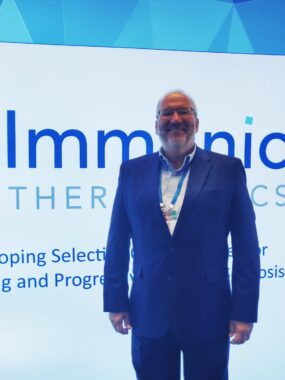ECTRIMS 2025: Vidofludimus calcium shows promise against MS
Trial data: Therapy has effect on patients with progressive forms of disease
Written by |

Immunic Therapeutics‘ experimental oral therapy vidofludimus calcium continues to show a significant effect on disability worsening in people with progressive forms of multiple sclerosis (MS), even in those without signs of active inflammation in the brain, a group with limited treatment options.
That’s according to new data from the Phase 2 CALLIPER trial (NCT05054140) that was shared late last month in an oral presentation and a poster at the 41st Congress of the European Committee for Treatment and Research in Multiple Sclerosis (ECTRIMS), held in Barcelona, Spain.
Overall, the results suggest the therapy may act on more than inflammation alone, potentially addressing additional mechanisms that drive MS progression.
“Usually, relapsing MS is the first stage, and then it comes to the progressive side, where a lot of the focal inflammation stops and there’s something else going on in the background that’s more diffuse, a chronic inflammation that makes patients really acquire more disability,” Andreas Muehler, MD, chief medical officer at Immunic, said in an interview with Multiple Sclerosis News Today during the meeting in Barcelona.
Vidofludimus calcium inhibits key protein
Vidofludimus calcium is a selective inhibitor of the DHODH protein, which helps control immune cells involved in MS-related inflammatory attacks without causing the broad immunosuppression that puts patients at higher risk of infections.
We “get anti-inflammatory effects very much directed at these immune cells that are involved in autoimmune disease, without really causing the side effects of normal immunosuppression that you usually have, like [an] increase in infections,” Muehler said.
The experimental therapy also activates the Nurr1 protein, which may protect nerve cells from damage and support their health.
“This will basically address more the mechanism … that’s connected to this diffuse, ongoing disability acquisition that has nothing to do with the focal inflammation,” Muehler added, noting that targeting these different aspects of MS biology may help address “the whole entity of MS, relapsing but also progressive, because these mechanisms overlap.”
The CALLIPER trial was designed to test vidofludimus calcium against a placebo in people with progressive forms of MS who had not experienced a relapse in the two years before enrollment. Among the 467 patients, 57.4% had nonactive secondary progressive MS (SPMS), 10.1% had active SPMS, and 32.5% had primary progressive MS (PPMS).
At the study’s start, or baseline, brain MRI scans showed that most patients (83.7%) had no gadolinium-enhancing lesions, which represent areas of tissue damage with active inflammation.
Therapy reduces risk of 24-week confirmed disability worsening
At ECTRIMS, Robert J. Fox, MD, a neurologist at the Mellen Center for MS at the Cleveland Clinic, shared new data from the study in an oral presentation, titled “Efficacy and Safety of Vidofludimus Calcium, a novel Nurr1 activator and Selective DHODH inhibitor, in Progressive Multiple Sclerosis: Data from the Phase 2 CALLIPER Trial.”
The trial’s main goal was to determine whether vidofludimus could slow brain atrophy, or the loss of brain tissue. After 2.5 years, brain shrinkage was 4.7% lower in patients given the therapy compared to those given a placebo, but the difference did not reach statistical significance.
Still, vidofludimus calcium reduced the risk of 24-week confirmed disability worsening, defined as an increase in Expanded Disability Status Scale (EDSS) scores that persisted for at least 24 weeks, by 23.8% compared with a placebo.
Fox also showed that patients on vidofludimus had a 14.1% lower risk of 24-week confirmed disability worsening when assessed with a composite measure that included EDSS scores, walking function, and hand dexterity. They also were more than twice as likely to experience a 24-week confirmed disability improvement on the EDSS scale.
Benefits of disability progression were consistent across key subgroups, including patients with PPMS, those with nonactive SPMS, and individuals without active lesions at baseline.
Benefits didn’t depend on whether patients had signs of active inflammation
In a poster presentation, Fox reported that PPMS patients treated with vidofludimus calcium had a 31.3% lower risk of 24-week confirmed disability worsening after about 2.5 years of treatment. Among those without active lesions at baseline, that risk was reduced by 34.4%.
Muehler cautioned that CALLIPER was not powered to detect a significant effect, but said the degree of benefit was similar to that seen in the ORATORIO Phase 3 clinical trial (NCT01194570), where Ocrevus (ocrelizumab), the only approved drug for PPMS, lowered the risk of disability progression in this population by 25%. What sets vidofludimus apart, he noted, is that its benefits did not depend on whether patients had signs of active inflammation.
“If you look at the patients who don’t have a gadolinium-enhancing lesion at baseline, the benefit [of Ocrevus] is very limited,” he said.
By contrast, “there’s absolutely no difference in the benefit … that we see in CALLIPER, whether you take the overall population or … you take these gadolinium-enhancing patients out,” he added. “And that’s really new.”
Muehler also pointed out that CALLIPER enrolled older patients and those with higher disability levels than ORATORIO.
“We believe that this brings more reliability into the treatment of patients that have not well been treated with [Ocrevus],” he said. If approved, Muehler feels vidofludimus calcium could be an option for patients at increased risk of infections with Ocrevus or for those who may not benefit from it.
Treatment had low rates of serious adverse events, discontinuations
Immunic also presented two posters at ECTRIMS with long-term data from the Phase 2 EMPhASIS trial (NCT03846219) and its open-label extension. These studies are assessing the safety and efficacy of vidofludimus calcium in people with relapsing-remitting MS. As reported earlier this year, more than 90% of patients remained free of confirmed disability events after up to 5.5 years of treatment.

Andreas Muehler, MD, chief medical officer at Immunic. (Photo by Ines Martins)
Of the disability events that did occur, most were associated with relapses (44.8%), while only 13.8% reflected progression independent of relapse activity (PIRA). That contrasts with recent evidence showing that, in people with relapsing MS on active treatment, about half of disability accumulation is due to PIRA.
The relatively low rate of PIRA events with vidofludimus “shows that potentially you have an effect,” Muehler noted.
In both CALLIPER and EMPhASIS, vidofludimus calcium had a safety and tolerability profile comparable to placebo, according to Muehler, with low rates of serious adverse events and treatment discontinuations.
“There’s a proportion of patients that is very sensitive to the safety and tolerability of treatments,” he said, adding that vidofludimus calcium may “offer an alternative for patients who value safety and tolerability [over efficacy] very much right after diagnosis.”
Immunic is now testing vidofludimus calcium in relapsing forms of MS in “two very large Phase 3 studies” — ENSURE-1 (NCT05134441) and ENSURE-2 (NCT05201638) — with topline data expected at the end of 2026.
Muehler said “this is our first time [having] Phase 3 results for this drug in any indication,” noting that if results are positive, they could “give us the path to potentially … making [vidofludimus calcium] available. Every employee in this company wants to see [vidofludimus calcium] available, because that would be a wonderful reward for a lot of the work that we have put in.”
Note: The Multiple Sclerosis News Today team is providing live coverage of the 41st Congress of the European Committee for Treatment and Research in Multiple Sclerosis (ECTRIMS) Sept. 24-26. Go here to see the latest stories from the conference.







